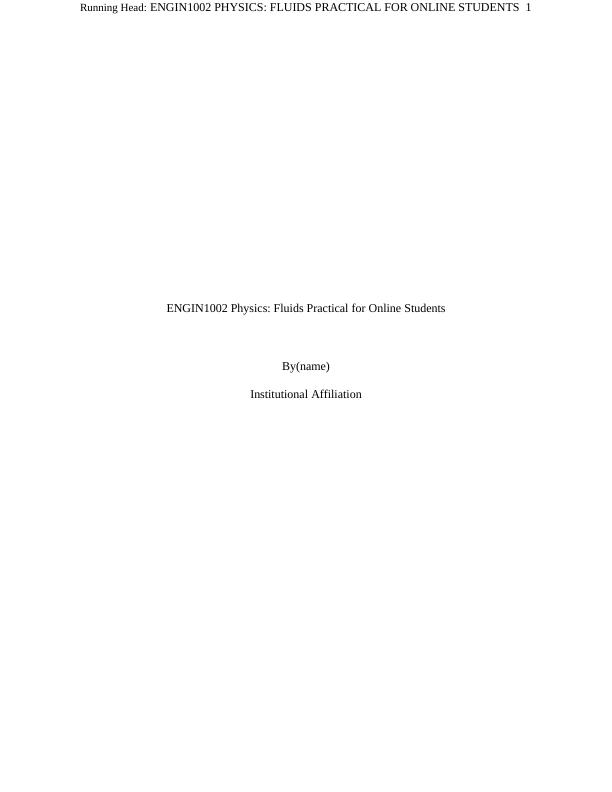ENGIN1002 Physics: Fluids Practical for Online Students
Please watch the video! Pipe friction experiment with measurements of volume, time, and head loss in a straight pipe and a bend.
18 Pages2362 Words472 Views
Added on 2023-03-31
About This Document
This document provides a practical guide for ENGIN1002 Physics students to study fluids. It includes objectives, introduction, procedure, results and analysis, discussion, conclusion, and recommendations. The document also covers topics like flow meters, open channel flow, friction loss in pipes, and Reynolds number.
ENGIN1002 Physics: Fluids Practical for Online Students
Please watch the video! Pipe friction experiment with measurements of volume, time, and head loss in a straight pipe and a bend.
Added on 2023-03-31
ShareRelated Documents
End of preview
Want to access all the pages? Upload your documents or become a member.
Head Loss and Differential Flow Assignment PDF
|43
|7065
|676
Lab 4 Fluid Friction in Pipes
|16
|1907
|21
Laminar and Turbulent Pipe Flow: Introduction, Method, Results
|19
|3534
|172
Hydraulics for Civil Engineering
|11
|1470
|27
Fluid Mechanics Engineering Lab Manual
|15
|1678
|199
Experiment : Friction in Pipes
|20
|1764
|43




